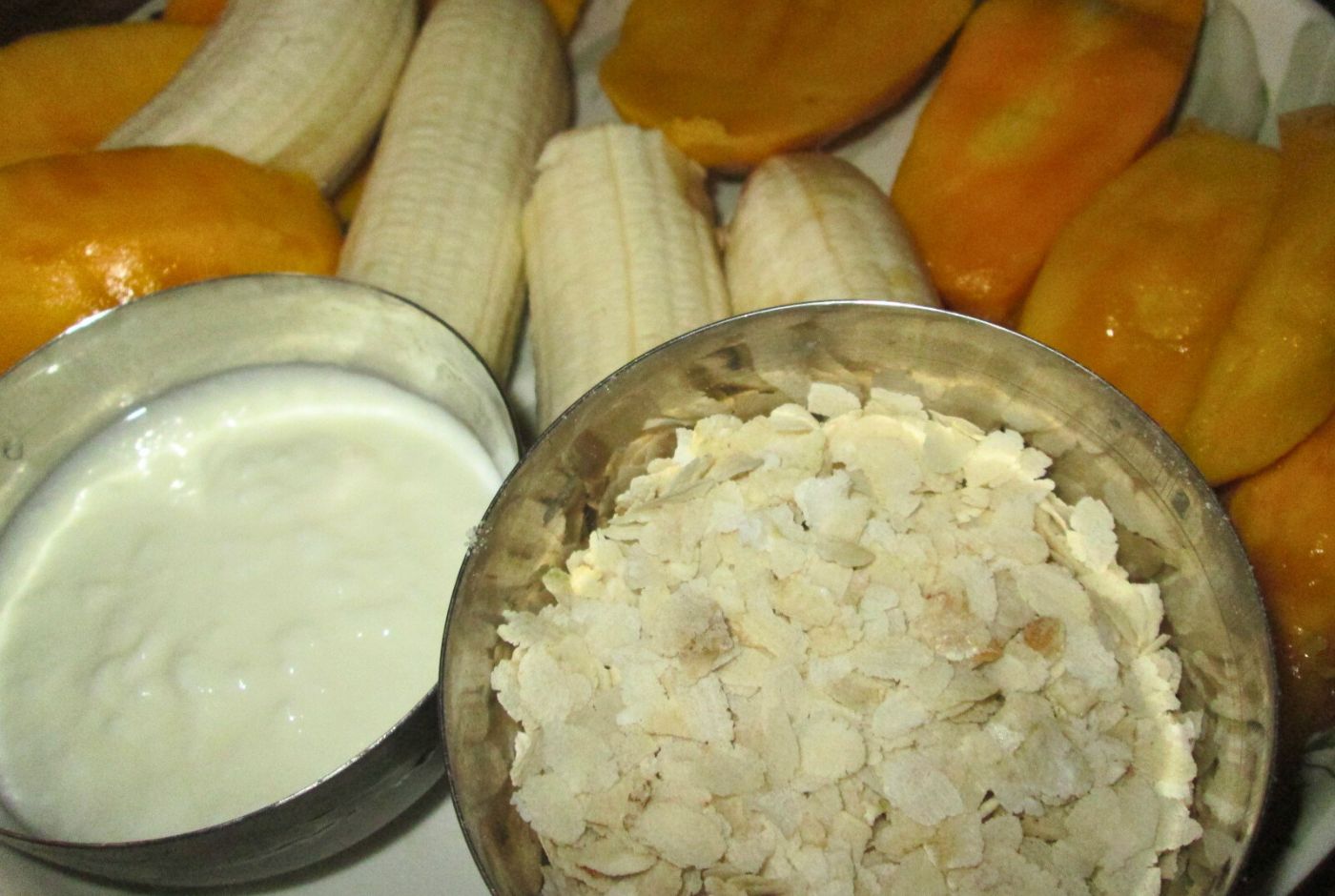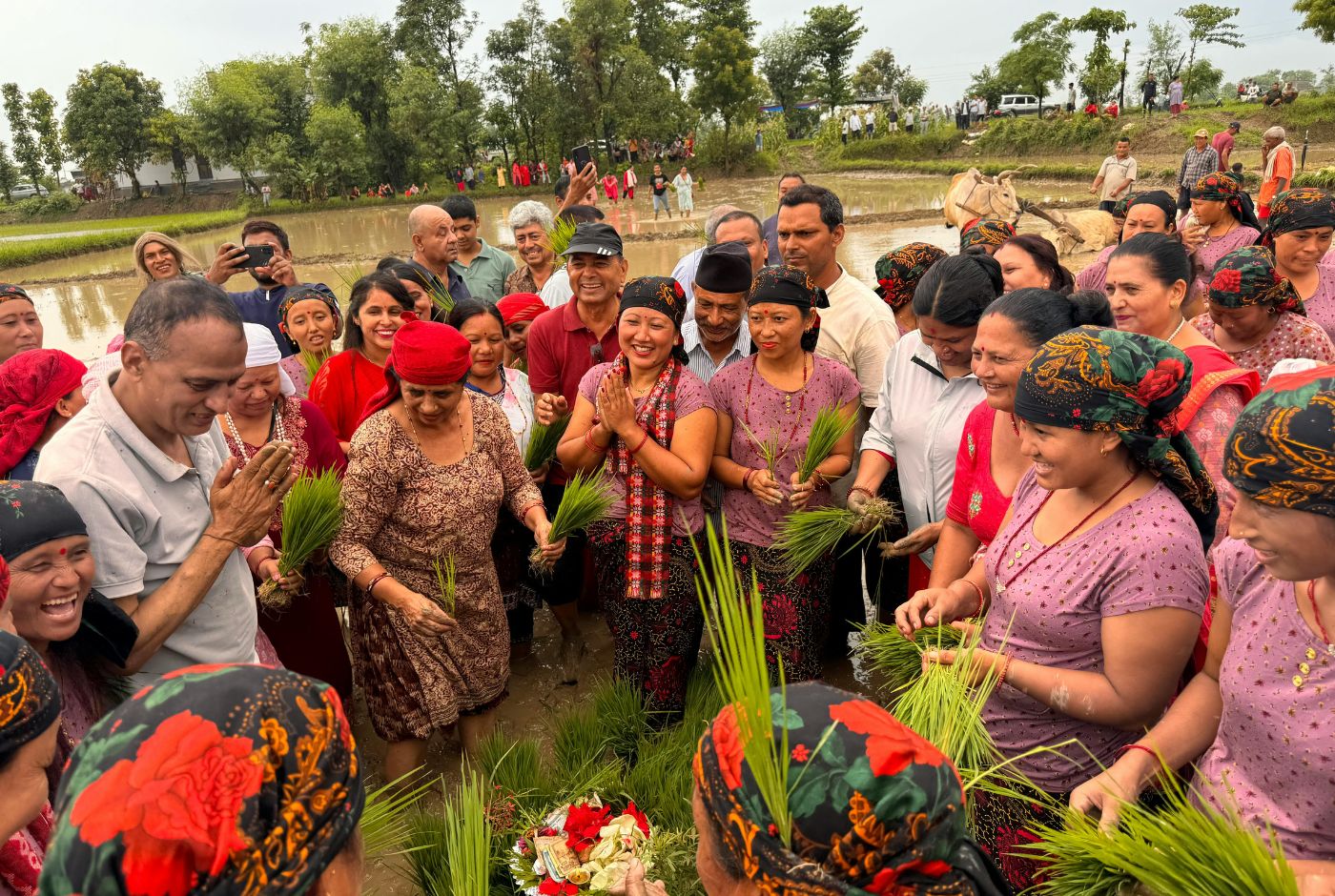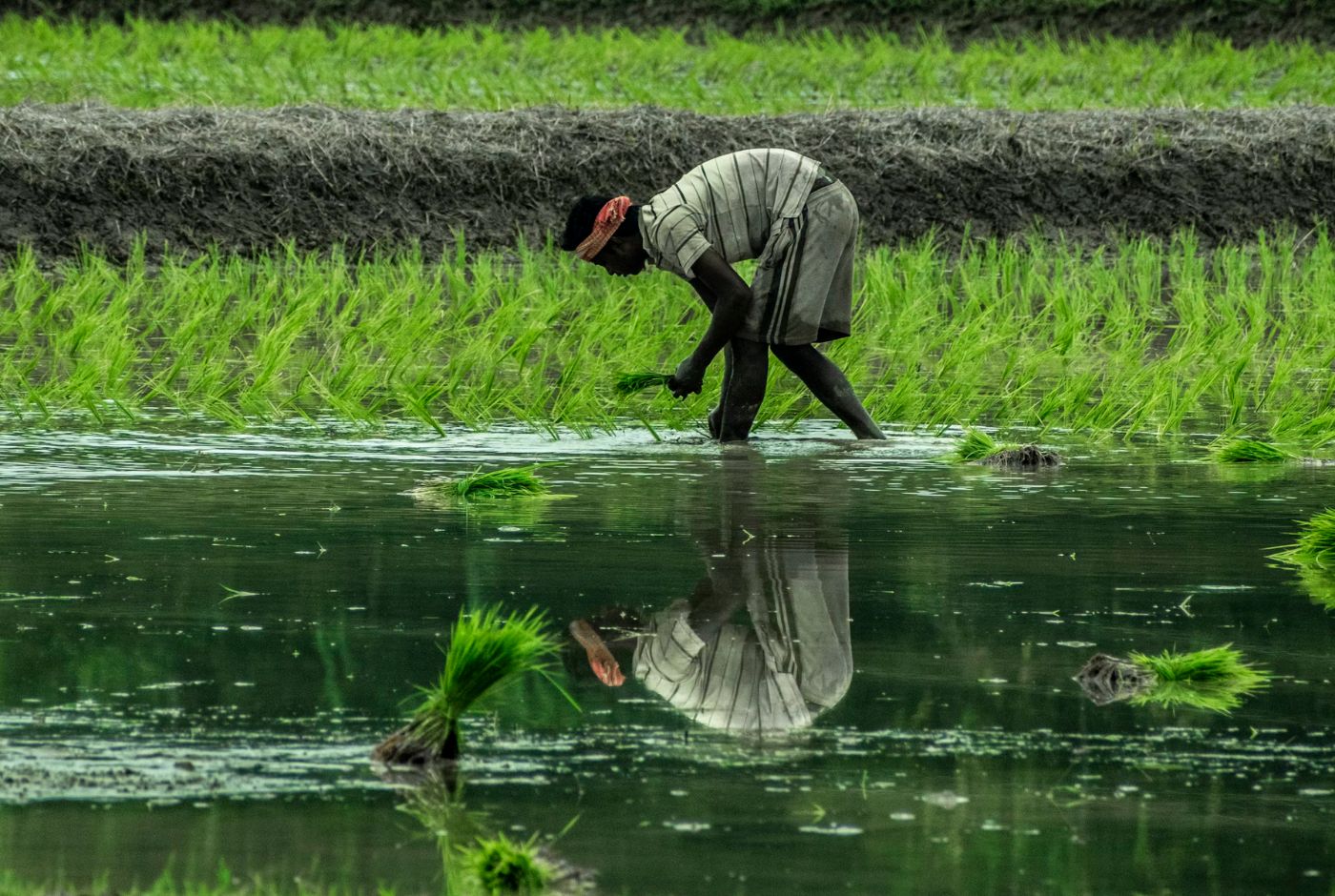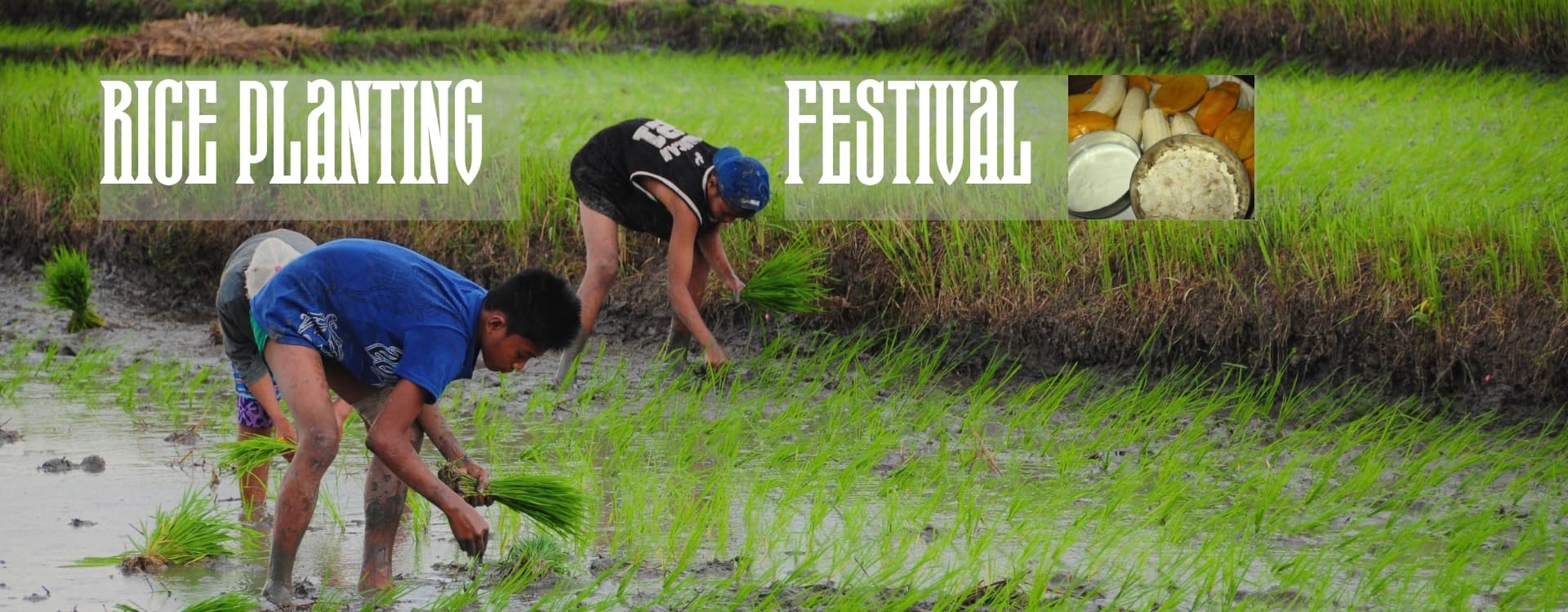In Nepal, the Rice Plantation Festival is celebrated every year on National Paddy Day or ‘Dhan Diwas’, which occurs on Asar 15 (month of June and July) and marks the onset of the rice plantation. This festival is colorful and meaningful as the single most important crop in Nepalese agriculture, and a staple food in their diet. Agricultural workers all over the nation perform various rituals involved in rice planting, signifying their desire for a prosperous yield. To cut a long story short, the festival not only reinstills the value of rice plantations in Nepal but also unites the people with the pleasures of music, dance, food sharing, etc.
What is the Rice Planting Festival in Nepal?
The Rice Planting Festival is normally celebrated in Nepal in late June and is often referred to as Asar 15 or Dahi Chiura Khane Din. Men and women farmers dance and chant as they transplant rice, indicating the beginning of monsoon and farming seasons. This festival brings people together as individuals patronize one another during this strenuous endeavor. Items such as beaten rice, known in Nepali as ‘Chiura,’ and yogurt, known as ‘Dahi,’ are distributed because they are thought to usher in prosperity in a new harvest. The celebration aims to reaffirm the cultural importance of the agriculture sector in Nepali society and a proper relationship between people, nature, and the soil. Altogether, it is a happy event that acknowledges the significance of rice cultivation in the life of Nepali people.
Dahi Chiura: When is Dahi Chiura Khaney din?

When is the Rice Planting Festival in Nepal 2025? Asar 15 English Date
Asar 15 "Asar Pandra", also known as Dhan Diwas, is a festival celebrated in Nepal to mark the rainy season on the 15th of Asar, which falls in early July of the Gregorian calendar. It is an important agricultural day because it forecasts the monsoon season, which is vital for rice farming in Nepal. This year, 2025, Ropain Diwas, also known as the Rice Planting Festival, falls on Sunday, June 29th.

The festival symbolizes the significance of rice in the Nepalese people’s diet and promotes togetherness and collaboration. It is a time for people to pray and give thanks for the rains, the fertile soils, and the farming practices, which are passed from one generation to another. While not a nationwide public holiday with a day off, it has been celebrated formally as National Paddy Day since 2061 BS, demonstrating its official recognition.
How is Rice Planting Festival Celebrated in Nepal?
Asaar 15, or ‘Ropain Diwas,’ ‘National Rice Planting Day’ is another prestigious festival that is celebrated with much communal spirit, especially in the agricultural zones of the country. This day also ushers in the monsoon and the rice planting season, which is a very important phase for the farmers of Nepal. The event normally incorporates cultural practices, where farmers, both male and female, go to the rice fields to embark on planting rice seedlings. They wear cultural costumes and engage in singing local music and dancing, making the environment cheerful and lively. It is also celebrated by a lot of merry-making and the symbolic act of washing one another with mud as a sign of unity due to the arrival of the planting season.
They are not limited to fields; several other cultural programs and functions are held in different parts of the country. This means that local markets and towns hold regular fairs, where the agricultural produce, as well as traditional foods, including yogurt and beaten rice, among others, are displayed and consumed in common. People in the government and city dwellers also participate in the celebration to signify how agriculture is valued in the Nepalese community. Thus, Asaar 15 is not only an agricultural fair but also a festival that underlines the cultural identity of the Nepali population, strengthening people’s unity and cooperation.

Where to celebrate this festival around Kathmandu?
One of the most widely rejoiced festivals, the Rice Planting Festival, also called the Asar Pandra or Ropain Festival, is enjoyed around Kathmandu. Here are some popular places and ways to experience the festival in and around the Kathmandu Valley:
Lele Village: Lele Village in Lalitpur District can be considered the best place to observe the process of rice planting in a local manner. The villagers perform music and dance and get more involved in mudding activities making it a favorite site for the locals as well as tourists.
Chapagaun: There is also another village in the Lalitpur District, Chapagaun, where the festival of Ricing Planting is celebrated in a very spirited manner. Practicality, attractive location, dynamic engagement of the local population, and distinctive features of the terraced rice paddies also speak volumes in favor of the location.
Bungamati and Khokana: These traditional Newari Villages are located in the southern areas of the Kathmandu Valley and have a reputation for having a rich history in farming. What is, however, unique at this site is the cultural troupes, and the typical Newari food served on the occasion of the Rice Planting Festival.
Kirtipur: This is a Nepalese town near Kathmandu that is particularly known for the Newari culture and traditions. The celebration of the Rice Planting Festival puts the Kirtipur fields to work and turns them into various sites of joy.
Bhaktapur: Bhaktapur is well recognized as the city of culture, and festivity makes the Rice Planting Festival even more appealing. The local farmers exercise tradition in planting, with tunes of background music, including songs and dances.
Asar 15 festival with the Nepal Hiking Team in the Bhaktapur area in 2025.
Kavresthali: Kavresthali, a small town north of Kathmandu Valley (Tarkeshwor Municipality), offers a glimpse into rice planting traditions. The surrounding fields and the idea of engaging local communities make the perspective different.
Thimi: It is another town located nearby Bhaktapur district and mainly famous for pottery as well as farming business. During the Rice Planting Festival celebrations, the fields of Thimi start bursting with energy.
Observing Farming Festivals near Kathmandu is a preview of local agriculture and Cultural Tourism in Nepal. Whether you have decided to plunge into the mud and drown in entertainment or just take time to watch the spectacle, it is worth it!
Happy Asar 15 from Nepal Hiking Team
If you're envisioning summer treks in Nepal, allow us to present an absolutely spellbinding possibility that elevates your journey from remarkable to truly extraordinary. You don't just want to see the mountains, right? You want to experience the vibrant, living festivals of Nepal.
Then seize this moment, this fleeting window, to experience the enjoyable, fun, and truly memorable festival of Rice Planting Festival, Asar 15, also known as Dahi Chiura. By planning your arrival around June 28th (Asar 14), you immerse yourself directly in Nepal's vibrant soul. Imagine the infectious laughter, the rhythm of ancient songs, the mud and joy as the entire community dances in the fields—it's pure magic unfolding before your eyes.
Witness this captivating cultural spectacle firsthand, then, with that incredible spirit still fresh in your memory, effortlessly step from the festive fields straight into the majestic embrace of the Himalayas the very next day. Join us and let the Nepal Hiking Team family craft your seamless, unique journey. Together, we’ll make this truly a memorable one, a story where mountains meet magic, leaving you with memories to last a lifetime.



Post a Comment